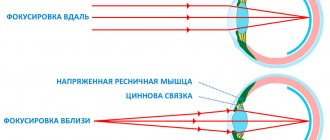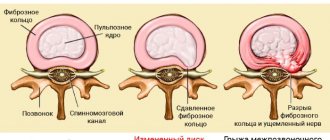Infectious disease specialist
Sinitsyn
Olga Valentinovna
33 years of experience
Highest qualification category of infectious disease doctor
Make an appointment
HIV (human immunodeficiency virus) is a virus that attacks the body's immune system. More precisely, it targets certain immune cells and kills them. The longer and more active this process lasts, the weaker the immune system becomes - over time, it is simply unable to cope even with infections that are relatively safe for an ordinary person.
HIV and AIDS - differences, duration of development, forecasts
AIDS is the final stage of HIV, which is characterized by severely reduced immunity. It is important not to confuse these two concepts. From the moment of HIV infection, the disease can develop to the AIDS stage without treatment within 9-11 years (on average). Once diagnosed with AIDS without treatment, life expectancy is short - on average up to 19 months.
If you start treatment on time, you can live a very long life at the HIV stage - the life expectancy of such patients thanks to modern treatment is 20-50 years. And although at the AIDS stage the situation is much more complicated, many patients, with proper treatment and a strong body, can live more than 10 years.
It is obvious that taking therapy is the most important factor for treating HIV and living a full, long life. Moreover, it is treatment that can significantly reduce the viral load and make the infected person harmless to the partner, as well as family members.
Brain damage due to HIV
Of particular note is the role of magnetic resonance spectroscopy (MRS) in the diagnosis of AIDS, which is capable of not only accurately differentiating the above pathology based on its chemical profiles, but also predicting and monitoring the effectiveness of antiviral therapy. However, it should also be noted that to perform MRS, a high-field MRI with a magnetic field strength of at least 3 Tesla is required.
We present an observation of an HIV-infected child.
Child P., 8 years old, was admitted to the children's department of the State Institution "Republican Scientific and Practical Center for Mental Health" on the referral of a child psychiatrist from the Minsk City Clinical Children's PND, accompanied by his mother and grandmother, with complaints of behavioral disturbances in the form of emotional lability, increased fatigue, absent-mindedness, lack of educational motivation, disturbances in speech (blurredness), writing (cannot keep up with a line), impaired concentration, increased distractibility. His condition changed in the spring of 2010. He was not registered with a psychiatrist. He has been disabled since childhood due to a somatic disease since 08/24/10. He has been registered with a pediatrician since 06/30/10. The child was registered late because the mother hid this condition of the child.
History: Child from 2nd pregnancy. Childbirth 1 is rapid, large fetus. He screamed right away.
Birth weight – 4100 g. We were discharged from the maternity hospital on time. At home I was a calm child. Early development was unremarkable. He began to hold his head up by 1 month. He started sitting at 6 months and began walking independently at 10 months. The first words appeared by 6 months, phrasal speech by one year.
He was enrolled in kindergarten at the age of 2, adapted well, had contact with children, and completed the kindergarten curriculum.
I went to school at the age of 6, studied according to the general education school program until 3rd grade (with “excellent” grades). In April-May 2010, I began to experience difficulties in studying due to increased fatigue and inability to concentrate on the educational material. Since September 2010, I studied at home according to the 4th grade general education program.
According to the mother, in the maternity hospital the ELISA-HIV blood test was negative. After clinical manifestations of the disease in the form of disturbances in gait, speech, and writing, the boy from the neurological department of the Lida TMO was sent for examination to the Grodno Regional Clinical Infectious Diseases Hospital, from where he was discharged with a diagnosis of HIV infection. Clinical stage 4 (AIDS). S-3 (SD-4 – 2 cells). Progressive multifocal leukoencephalopathy.
Among the diseases suffered, the following were noted: ARVI, chicken pox at 3 years old, stomatitis, pneumonia (in 2007 it was a protracted course, treated as an inpatient), frequent bronchitis.
Injuries, surgeries, and seizures are denied.
Allergies to flowering herbs, mosquito bites, pollen, sweets.
Mother: 28 years old - infected with HIV since 2006. Currently undergoing chemotherapy for non-Hodgkin's lymphoma.
Father: 37 years old - according to the mother - healthy. Has not lived with family since the birth of the child.
The mother has been married since 2003, the child has been transferred to his stepfather’s surname.
The mother's second husband is not infected with HIV.
Heredity is psychopathologically (according to the mother) not burdened.
Neurological status: complaints of speech and writing disorders. FMN D=S.
The pupils are equal in size. There is no nystagmus. Full range of eye movements. Convergence is slightly reduced. The face is symmetrical. Tongue in the midline. CHP D=S.
Movements in the limbs are full. Muscle strength is sufficient. Muscle tone is slightly reduced, D=S. No pathological signs were identified.
Does not perform coordination tests: adiadochokinesis is noted. Unstable in the Romberg position (mild static ataxia). The gait is uncertain. There are no meningeal signs.
Somatic status:
Highly nourished child. Skin with elements of allergic dermatitis. Visible mucous membranes are clean. In the lungs there is vesicular breathing. Heart sounds are rhythmic. The abdomen is soft and painless. Physiological functions are normal.
Mental status:
Conscious. Oriented partly to a place and completely to one’s own personality (did not name the day, month and year - when asked, he began to list the seasons in the wrong sequence; lists the days of the week correctly). Speech is fast and slurred. The vocabulary is sufficient, but awareness is reduced.
Knows basic colors. Summarizes and classifies using, “selecting the 4th extra” is not available. He does not understand the hidden meaning of proverbs and sayings. He reads quickly, but does not understand the essence of what he read and does not retell the text. Fine motor skills of the hands are impaired, shows the basic figures, but has difficulty working with the Seguin board. Self-service skills have been developed, but he only partially uses them independently. The mood is labile. Gets tired and exhausted quickly. Cannot explain changes in his behavior. Criticism reduced. I stayed in the department with my grandmother, because... needs specific and additional care.
Routes of HIV transmission
Main routes of HIV infection:
- unprotected sex with an infected person (the most common route of HIV transmission). You can become infected either after a single contact or after several;
- using a needle to inject drugs after an infected person. Or other variants of situations in which the blood of a healthy person comes into contact with the blood of an infected person;
- transmission from mother to fetus during childbirth or from mother to child during breastfeeding. An important note: if a woman is treated and is under the supervision of doctors, she has every chance of giving birth to a healthy baby;
- transfusion of infected blood. In modern clinics and hospitals this is no longer possible, since all materials undergo very serious testing.
There are also so-called risk groups - these are people who are more susceptible to HIV infection than others:
- people who are promiscuous;
- homosexuals;
- drug addicts who inject drugs;
- people with a partner infected with the virus.
Such people should constantly get tested. In some cases, they are recommended to take preventive medications (only on the recommendation of a doctor).
When talking about how you can become infected with HIV, you should clarify in what cases this is impossible:
- during everyday contacts;
- when using infected utensils;
- with an insect bite;
- when kissing.
Contact with an HIV-infected person at the everyday level (in the family, at work, in other forms of communication) is absolutely safe and does not pose any threat to others.
Results of examination of the central nervous system for HIV,
RCT of the brain dated May 24, 2010.
The study was carried out using the usual technique, without contrast enhancement, with a section thickness of 5 mm. Pathological formations and foci of brain matter with altered density are not visualized. The midline structures of the brain are not displaced. The ventricular system is not dilated or deformed. The subarachnoid spaces and sulci of the brain are not expanded. The sella turcica is of regular shape and normal size; no destructive changes in the bones that form it have been identified. The cisterns at the base of the brain are not changed. No bone pathology was detected, the paranasal sinuses were airy.
Conclusion : Structural pathological changes in the brain were not identified.
MRI of the brain in Minsk on September 22, 2010. It was carried out on an “Obraz 2 M” tomograph (RF, 1998) with a magnetic field strength of 0.14 Tesla
No pathological space-occupying formations were identified in the cranial cavity. In the white matter of the brain (mainly in the semioval bodies), a diffuse hyperintense MR signal in the T2 image is detected on both sides (Fig. 1,2,3). After administration of a contrast agent (Omniscan 20 ml), areas of pathological accumulation are not detected. The midline structures are not displaced. Cortical grooves and basal cisterns are moderately dilated. The lateral ventricles are somewhat dilated and symmetrical. The fourth ventricle is of normal size and shape and occupies a mid-position. The craniospinal junction is without features. The pituitary gland is of normal size and shape.
Conclusion : The MR picture may be consistent with HIV-associated encephalitis.
Speech therapist's conclusion : speech articulation disorder (rotacism).
Psychologist's conclusion: the level of intellectual development corresponds to mild mental retardation (72/58/62) - regression. Violation of the emotional sphere, monotony. Fluency, slurred speech.
The logical structure of thought processes is disrupted, incoherence is noted. Reduced control over criticism of one's behavior. The volume and concentration of attention suffers, and rapid exhaustion is noted. Reduced mnestic function.
Taking into account the anamnesis (HIV-infected, behavior has changed in the form of increased fatigue, hyperactivity, lack of educational motivation), the clinical picture and objective data (lability of the psycho-emotional sphere, difficulties in concentrating voluntary attention and exhaustion of attention, difficulties in communication and learning), we can put diagnosis:
Organic personality disorder due to HIV infection. F.07.14.
dementia due to HIV infection (HIV encephalopathy). F.02.4
Main stages of the disease
The stages of HIV are divided into the following:
- incubation This is the stage at which infection and subsequent multiplication of the virus in the blood occurs. It lasts up to six weeks, sometimes less. Even if infected, at this stage a person will not see obvious signs, and a blood test will not show that there are antibodies in the blood;
- primary. The first signs of infection may already appear here. The second stage lasts for 3 weeks - at this time antibodies appear, the virus is determined in the laboratory;
- subclinical. The first sign of the disease appears - enlarged lymph nodes. The patient feels completely healthy and does not complain about his health;
- the appearance of secondary diseases. The immune system begins to malfunction, causing a variety of diseases to appear: from frequent colds and candidiasis to pneumonia, tuberculosis;
- terminal. The stage involves exhaustion (rather rapid and progressive), as well as the subsequent death of the patient.
The stages do not have one correct time frame - they may differ from person to person. For example, HIV-infected people often feel well for years or do not pay attention to small signs. The disease is detected only at the stage of severe deterioration in health or through random tests.
HIV encephalopathy by stages
The World Health Organization (WHO) lists HIV encephalopathy as a symptom of the final stage of HIV.
It is also the most severe of the three stages of HIV-associated neurocognitive disorder:
- Asymptomatic neurocognitive impairment
: This form has no symptoms of cognitive decline. - HIV-associated mild neurocognitive disorder
: Mild symptoms of cognitive impairment may occur. - HIV encephalopathy
: presents with severe symptoms of cognitive decline.
Symptoms of HIV
Once you know how HIV is transmitted, you need to understand the symptoms. The problem is that these symptoms appear at an early stage, then disappear and no longer bother the person for a long time - literally for years. They are also very similar to the manifestations of other diseases, which can be misleading.
So, at the first stage, when the virus manifests itself, a person may feel:
- sore throat, fever;
- soreness of the skin, joints, bones4
- chills, fever.
At the same time, the cervical lymph nodes enlarge and various rashes may appear. All this is often mistaken for signs of ARVI or other similar diseases.
New HIV symptoms return after several years of a calm and healthy life. These include:
- severe fatigue, fatigue;
- enlargement of lymph nodes - not only in the cervical, but in several groups;
- weight loss. Usually it looks causeless, the person does not understand what is going on;
- fever, chills, sweating (mostly at night);
- problems with the gastrointestinal tract - usually manifested by loose stools for no apparent reason.
At this stage, as a rule, the disease is detected - because the patient goes to the doctor, and the specialist prescribes an additional examination.
Are you experiencing symptoms of HIV?
Only a doctor can accurately diagnose the disease. Don't delay your consultation - call
The source of trouble is a virus
The immunodeficiency virus was discovered in 1982, by which time there were already thousands of AIDS patients. Three years later, its sibling was discovered, differing only in the structure of the surface shell; the clinical picture of the disease they cause is not at all different, therefore both viruses are named type1 and type2. Lentiviruses, a group of which includes HIV, live in animal bodies for millions of years, suggesting that the very first HIV came to humans from a monkey about a hundred years ago, and this happened somewhere in West Africa.
No one knows who actually was the first or even the thousandth infected, because the infection was discovered when it had already formed an epidemic, when the patients were already in the last stage of the disease, to which years and years had passed. This is the first infection that was so belatedly revealed to humanity. The reason for this is the peculiarity of the course, when there are no symptoms of the disease for many years. As if trying to make up for lost time, scientists have developed HIV into the most studied viruses, writing hundreds of thousands of articles about it.
How is HIV diagnosed in Moscow?
There are two tests to diagnose the virus: preliminary ELISA and the most accurate immunoblot. The accuracy of ELISA is about 90%. It is recommended to carry out it 3-6 months after contact with the virus, then it gives maximum accuracy. The usual ELISA test is based on a blood test, but there are also rapid tests that help obtain information based on urine or saliva. Such texts are purchased exclusively at the pharmacy (in no case on the Internet!), since it is necessary to use officially approved products.
If the rapid test gives a positive result, you need to go to an infectious disease specialist yourself. In such a situation, as well as when ELISA in a blood test gives a positive result, the patient is prescribed an immunoblot. Its reliability is already 99.9%. Depending on the diagnosis, the diagnosis is made either on the basis of two repeated tests or a combination of both. The analysis is rechecked and only after this a diagnosis can be made. This is necessary in order to exclude false positive results that may occur during the diagnostic process.
Important: the test does not show how HIV is transmitted in a particular situation - that is, you can determine the route of infection only by analyzing your own actions.
It is well known that mental disorders such as anxiety and depression, as well as HIV-associated neurocognitive disorders (HAND), are widespread among people suffering from HIV infection, which seriously affect the mood, behavior and mental functioning of HIV-infected patients and in further – on the prognosis of the disease, the duration and quality of their life [1–5].
Conditions such as anxiety and depression occur in 20–40% of patients with HIV infection [6, 7] and must be taken into account when assessing the clinical status of a particular patient.
The priority tasks that need to be addressed include a set of problems that are constantly faced by any person who has received information about his positive HIV status. Patients often feel alienated from society and due to the stigma associated with HIV/AIDS, even among health care workers. They are afraid that others will know about their illness. This leads to a deterioration in their social contacts and negatively affects their mental state. In addition, patients with HIV infection often suffer from comorbidities that can worsen depression, as well as alcohol and drug use [8, 9]. Antiretroviral therapy (ART) can further complicate the situation.
Side effects from its use (albeit temporary) can lead to visible physical changes such as lipodystrophy and jaundice [10, 11]. These highly visible phenomena can negatively affect patients' perceptions of their physical appearance, disrupting the quality of their personal and social relationships [12].
A second, no less serious problem with HIV infection may be the development of VANR. HIV enters the central nervous system (CNS) through the blood-brain barrier (BBB) inside monocytes and/or macrophages in a “Trojan horse” fashion [13]. In this case, HIV does not necessarily enter neurons, but can cause direct or indirect (due to the inflammatory response) damage to synapses and dendrites [13], which can lead to damage to neurosystems at various levels. According to summarized data from various sources, the incidence of VANR reaches 80% and varies depending on the severity of neurological disorders [14, 15]. From 1991 to 1995, specialists from the American Academy of Neurology developed and expanded the VANR classification.
According to this classification, there are three types of neurocognitive disorders:
1. Asymptomatic.
2. HIV-associated mild disorders.
3. HIV-associated dementia [16].
A diagnosis of VAD can only be made after assessing at least five areas of neurocognitive function that are affected by HIV infection, such as executive function, episodic memory, processing speed, motor skills, attention/working memory, language, and sensory perception. using special neuropsychological testing [17]. It is interesting to note that with the advent of ART there was no decrease in the frequency of VANR, but the structure of neurological disorders changed significantly. Thus, in the general structure of VANR, the prevalence of HIV-associated dementia decreased from 18 to 2%, and the frequency of mild neurocognitive impairment, on the contrary, increased from 12 to 29% [15, 18].
It has been proven that risk factors for the development of VANR can be the patient himself (his gender, age), characteristics of the course of HIV infection (CD4 cell level), phylogenetic features of the virus, as well as concomitant infections, for example, hepatitis C virus (HCV). A number of studies have shown that a CD4 cell level of less than 200/μl increases the risk of developing VANR by 3 times, and less than 100/μl by 7 times [19–23]. These data suggest that earlier initiation of ART may protect HIV-infected patients from the development of neurocognitive impairment.
The reason for the increased risk of developing VANR in HIV-infected patients with concomitant HCV infection has not been fully established. One hypothesis may be the synergism of the two viruses. Because both viruses replicate in monocytes/macrophages, T and B lymphocytes, HIV infection may enhance HCV replication [24]. Another hypothesis is related to increased neurocognitive deficits as a result of liver decompensation caused by HIV-mediated progression of fibrosis during HIV/HCV co-infection [25]. A study conducted among HIV-infected women who inject drugs with concomitant HCV infection showed a higher incidence of VANR (52.9%) compared with patients monoinfected with HIV (37.3%) or HCV (37.0). %) [26].
When the viral load in the blood plasma is suppressed, residual HIV replication may be observed in other anatomical spaces. Cerebrospinal fluid (CSF) is a separate anatomical reservoir, and viral replication in it can be accompanied by the development of neurological disorders, as confirmed by recent studies. One of them showed that the incidence of VANR development does not depend on the suppression of HIV RNA replication in the blood plasma. The study assessed cognitive function in HIV-infected patients with an undetectable viral load for more than 3 months at the time of inclusion in the study. All patients, 50 of whom complained of changes in cognitive functions, and 50 did not present such complaints, underwent a series of neuropsychological tests assessing their cortical and subcortical functions. As a result of the study, VANR was identified in 84% of patients with complaints and 64% of patients without complaints, and moderate or severe variants of cognitive impairment were more often identified in patients with complaints compared to patients without complaints [14].
In another study, 11 patients on effective ART for 12 years had neurological symptoms and were diagnosed with encephalitis (n = 9) and myelitis (n = 2) using magnetic resonance imaging. The average level of HIV RNA in the CSF of these patients was 880 copies/ml, and in the blood plasma <50 copies/ml. In 7 patients, forms of the virus resistant to the current ART regimen were found in the CSF. In ten patients, based on determination of the HIV genotype and indicators of drug penetration into the central nervous system, the ART regimen was changed. All patients showed clinical improvement 4 weeks after changing the ART regimen, and in 9 patients, the concentration of HIV RNA in the CSF 6 months after changing the regimen fell below 200 copies/ml [27].
Control of viral replication in the CSF may play an important role in both the prevention of VANR and the isolation of drug-resistant mutant viruses. Therefore, recently, increasing attention has been paid to the ability of various antiretroviral drugs (ARVs) to penetrate the GER into the central nervous system. In 2006, Letendre S. et al. at the 13th Conference on Retroviruses and Opportunistic Diseases (13thCROI) were first proposed [28], and in 2008 they published a classification of ARVs according to the degree of their penetration into the central nervous system [29]. The classification is based on the chemical properties, pharmacokinetics of ARVs and their ability to suppress HIV RNA replication in the CSF, proven in clinical studies. Using this approach, all ARVs were divided into three categories: low, medium and high degree of penetration into the central nervous system, with each category assigned a certain score (0, 0.5 and 1, respectively). At the same time, for example, drugs with a low degree of penetration had a high molecular weight (in particular, enfuvirtide), which prevented their passage through the BBB, and their concentration required for 50% suppression of viral replication (IC50) in the CSF did not exceed the IC50 for wild type HIV (eg, didanosine); or Clinical studies have not demonstrated a reduction in CSF viral load or an improvement in cognitive function in HIV-infected patients with VANR while taking these ARVs (particularly saquinavir). In contrast, ARVs with high CNS penetration had molecular and pharmacological properties that ensure good passage through the BBB (eg, nevirapine); their CSF drug concentrations significantly exceeded the IC50 for wild-type HIV (eg, lopinavir/ritonavir), and clinical studies of these drugs (eg, zidovudine) demonstrated reduced CSF viral load and improved cognitive function.
The same work [29] examined the question: does the degree of penetration of the ARV combination into the CNS correlate with a decrease in HIV content in the CSF? For this purpose, data from 467 HIV-infected patients receiving ART were analyzed. The penetration coefficient of the entire ART regimen was calculated by summing the individual CNS penetration values of each ARV. The average penetration coefficient was 1.5. Lower values were associated with higher levels of virus in the CSF. In multivariate regression analyses, lower penetration rates were associated with detectable CSF viral load, even after adjustment for total ARV counts, antiretroviral treatment adherence, plasma viral load, duration and type of current treatment regimen, and CD4 cell count.
In 2010, the Letendre S. classification was 2006–2008. has been revised. The new classification was based on the results of the large CHARTER cohort study, which included 1221 HIV-infected patients from 6 US centers, 842 of whom were receiving ART. In the ART-treated group, detectable CSF viral load (>50 copies/mL) was correlated with high plasma viral load, Caucasian race, low CD4 cell count, frequent changes in treatment regimen, short duration of current ART regimen, poor adherence and older age. age. The new 2010 classification contains 4 categories (from 1 to 4) as opposed to the 2008 version, which had 3 (from 0 to 1); new ARVs were added to the list, and several drugs were removed from the list [30].
The classification system of ARVs according to the degree of penetration into the central nervous system has found its application in works of recent years, which have proven the clinical significance of the penetration rates of individual ARVs and the entire ART regimen as a whole. Thus, 185 patients from the CHARTER cohort, who were followed from 1996 to 2006, underwent a battery of neuropsychological tests before starting or changing their ART regimen. At the first follow-up visit, after 20 months, and at the last visit after 39 months, there was a statistically significant correlation of high drug penetration rates according to the 2008 assessment system with more pronounced improvements in concentration, speed and flexibility of cognitive processes [31].
A striking example of successful treatment of acute meningoencephalitis in an HIV-infected patient, taking into account the ARV classification system based on penetration coefficient, can be the following clinical example. A thirty-five-year-old man was admitted to the hospital with a 4-week history of severe headache, apathy, and cognitive impairment. He presented with severe confusion, complete disorientation, stiff neck, severe limb weakness, urinary retention, molluscum contagiosum on the face and aphthous stomatitis in the mouth. Magnetic resonance imaging of the brain shows a picture of meningoencephalitis. Laboratory parameters were as follows: CD4 cell count 35/μl, HIV RNA in blood plasma 159 thousand copies/ml, HIV RNA in CSF 13 million copies/ml. As a result of the examination, an ART regimen was prescribed: lopinavir/ritonavir, zidovudine, lamivudine. According to the classification of Letendre S. (2008), the penetration rate of the entire ART regimen was 2.5: lopinavir/ritonavir (1) + zidovudine (1) + lamivudine (0.5). Two weeks after starting ART, the patient stopped having headaches, his mental state improved, neck stiffness and problems with urination disappeared, and laboratory parameters returned to normal. Clinical improvement was accompanied by a progressive decrease in the level of HIV RNA in the CSF in parallel with a decrease in the viral load in the blood plasma: at the 6th month of observation, the level of HIV RNA in the blood plasma was <40, and in the CSF – 73 copies/ml [32]. Thus, an individualized approach to the patient and an optimized ART regimen taking into account BBB penetration can provide effective treatment of symptoms of CNS damage and improve clinical outcomes.
HIV treatment
Treatment boils down to prescribing antiretroviral therapy. The patient is given a medication regimen - and it must be followed as precisely as possible, without deviating from the program. Otherwise, the virus may develop resistance to treatment and cannot be further suppressed.
Indicators of quality treatment are a decrease in the viral load, as well as an increase in CD4+ cells in the blood, which indicates the activity of the immune system.
Medicines for treatment are issued in medical institutions, patients are registered and receive medications free of charge, in accordance with the established procedure. Information about the disease is confidential - it is not sent to work, place of study or other places. The patient has the right to keep it secret (if this is not provided for in separate work contracts).
If the rules for taking therapy are followed, the virus in the blood gradually decreases; over time, the patient becomes completely safe for his sexual partner and is not able to infect anyone.
Treatment performed after MRI of the brain:
1. Antiviral – “zidovudine”, “paleyvudine”, “efavir”
2. Immunomodulators – “immunofan”, “gepon”
3. Antifungal drugs - “fluconazole”
This observation allows us to draw the following conclusions: 1. unlike MRI, CT cannot effectively visualize CNS lesions in HIV-infected patients, while MRI is more sensitive 2. the examination plan for children with mental retardation and other behavioral disorders requires mandatory inclusion in their examination not only of specific research methods generally accepted for psychiatry, neurology and infectious diseases, but also of such a neuroimaging method as MRI, given its high informativeness and harmlessness (especially since we are talking about pediatric patients). 3. for a full examination of patients, it is preferable for a large mental hospital to have in its diagnostic arsenal a high-field (at least 3 Tesla) MRI, which would allow not only to reliably exclude the neurological (organic origin) component of mental pathology, but also to differentiate various types of mental pathology into based on its chemical profile (i.e., conduct MRS), as well as predict and monitor the effectiveness of the therapy.
Prevention of HIV infection
The first and most important rule is to be regularly tested for HIV, even if you have not had suspicious contacts. It is recommended to be examined once every six months - especially since there are convenient rapid tests for this.
You also need to be careful when choosing partners. You should not take the word of a person who says that he is definitely not sick - it is better to ask for the results of the study and see for yourself that you can trust him. But remember that within six months even contaminated blood may not give positive results.
HIV prevention consists of the following points:
- protected sex with non-regular sexual partners, as well as regular ones, if there is no confidence that the partner is not sick or is faithful;
- exclusion from life of drugs and promiscuity;
- maintaining general hygiene. Avoid sharing razors, toothbrushes, nail clippers, and other items that may come into contact with small wounds.
The main prevention is to be aware of the infection and always remember the danger of infection.
Popular questions and answers about HIV
How does HIV manifest in men and women?
The symptoms of HIV in women are exactly the same as the symptoms of HIV in men. Manifestations may differ only at the level of genitourinary diseases, when the body is already very weakened - for example, thrush appears more often in women. Otherwise, there are no specific signs by gender.
Is there a cure for HIV?
Technically, we can say that there is no cure for HIV - patients are constantly required to undergo special therapy. But the results that it allows to achieve make the patient a healthy person who can live calmly for decades without any problems - you just need to constantly take medications and monitor your health.
HIV has not been a fatal disease for a long time!
Is HIV a disease of drug addicts and people with disordered lifestyles?
In fact, this is a myth that HIV activists are constantly dispelling. Unfortunately, a person who leads a healthy lifestyle and is responsible for their relationships can also get this disease. It is enough that a sexual partner can cheat – and in this way “bring” illness to the couple. HIV is not always a sign of an irresponsible attitude towards one’s life.
Who are HIV dissidents?
These are people who, contrary to scientific data and common sense, deny the existence of the virus. They refuse treatment, which inevitably leads to early death. Such people are also dangerous because, due to lack of treatment, they spread the virus among their sexual partners without warning them of the possible danger (because they do not believe that it exists).
The success of HIV treatment and long life lies in seeking help and starting therapy as early as possible. In this case, a person will have a long life without fears and difficulties.
Damage to the central nervous system in HIV
A special place in the clinical and neurological manifestations of AIDS is given to cytomegalovirus infection (CMV) [2,3]. It has been suggested that it is the combination of HIV and CMV infections that leads to the development of AIDS-associated encephalopathy and dementia. At the same time, it should be especially emphasized that the picture of HIV encephalopathy is most clearly manifested in children, which is apparently associated with the immaturity of the brain substance and its extreme vulnerability, both at the stage of infection and in the future. In these cases, HIV encephalopathy, as well as other serious manifestations of cell-mediated immune deficiency, develop over a relatively short period of time (5-8 years). It is obvious that one of the early symptoms of HIV encephalopathy is behavioral changes [1,2,3]. Naturally, the appearance of such symptoms first of all requires the mandatory inclusion of psychoneurological specialists in the complex of examination of such children.
One of the common manifestations of central nervous system damage during HIV infection is subacute HIV encephalitis, characterized by a pronounced atrophic process, primarily in the cerebral cortex. In an MRI study, it is manifested by expansion of the subarachnoid space and ventricles of the brain. Focal lesions of the central nervous system are also possible, when microscopic examination reveals parenchymal and perivascular infiltration of lymphocytes and macrophages around the veins and capillaries in the projection of the semioval centers, basal ganglia and pons. In this case, in the subcortical parts of the white matter of the frontal and parietal lobes, foci caused by demyelination of intracortical fibers can be visualized [4,5]. It should also be noted that intravenous contrast is not effective in this case. Changes are often two-way. It should be especially emphasized that the described picture is nonspecific and also occurs with CMV infection, which can also manifest itself as diffuse damage to the deep white matter (the lesions, as a rule, have clear contours, without perifocal edema). It is also possible to develop ventriculitis with the involvement of the periventricular white matter in the process, but in this case there is an accumulation of the contrast agent.
Tumors are relatively rare and, as a rule, have an atypical course (first of all, of course, it is necessary to mention lymphoma). Usually the tumor has the appearance of a solid node, but in half of the cases there is a multifocal lesion, with the possibility of spreading to the membranes of the brain. Most often, characteristic changes are localized in the periventricular region, however, the basal ganglia with the septum pellucida and the corpus callosum can also be involved in the process, and pronounced perifocal edema is almost always observed. The tumor itself is characterized by a moderately hypointense signal on T1-weighted images (WI) and a moderately hyper- or isointense signal on T2-weighted images on MRI, and after intravenous administration of contrast, a ring-shaped or solid-type change in signal intensity is observed [4,5].










